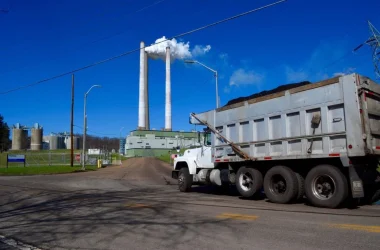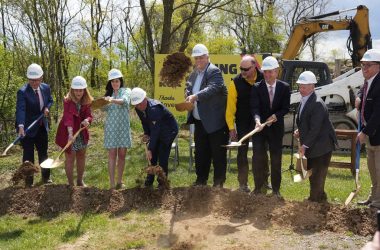
CHARLESTON, W.Va. – The following events happened on these dates in West Virginia history. To read more, go to e-WV: The West Virginia Encyclopedia at www.wvencyclopedia.org.
Sept. 9, 1839: Anderson “Devil Anse” Hatfield was born in Mingo County. He was the patriarch of the Hatfield family and their leader during the Hatfield-McCoy feud.
Sept. 10, 1782: Frontier heroine Betty Zane is credited with saving Fort Henry in Wheeling during an attack by the British and Indians. According to one account, Zane sprinted across a field to retrieve gunpowder from the Zane family cabin.
Sept. 10, 1861: The Battle of Carnifex Ferry took place on the Gauley River. Union General William Rosecrans sent in brigades one at a time as they arrived at the battlefield, allowing the outnumbered Confederates to repulse the piecemeal attacks. During the night, the Confederates decided to retreat before they could be defeated in the morning.
Sept. 10, 1996: Movie and television actress Joanne Dru died in Los Angeles. Dru was born Joan Letitia Lacock in Logan, West Virginia. Her movie career included more than 40 films.
Sept. 11, 1913: Ritter Park in Huntington opened. Much of the roads and stonework around the 75-acre municipal park were constructed as part of the Works Progress Administration project during the Great Depression.
Sept. 12, 1861: The Battle of Cheat Mountain was fought near the Randolph-Pocahontas County line. Gen. Robert E. Lee came into western Virginia to give support to Gen. William W. Loring, commander of the Army of Northwestern Virginia, but the battle ended in a defeat for the Confederacy.
Sept. 12, 1872: The Great Bend Tunnel was completed. The tunnel, also known as Big Bend Tunnel, is the place where John Henry defeated the steam drill, becoming one of the world’s great folk heroes.
Sept. 12, 1952: A group of local youths were startled from a game of football by a fireball streaking across the sky. The fireball fell to earth just beyond a hillside at Flatwoods. This sighting led to the legend of the Braxton County Monster.
Sept. 12, 1960: Ohio Valley College in Parkersburg began operation as a junior college. The private college, which is affiliated with the Church of Christ, changed its name to Ohio Valley University in 2005.
Sept. 12, 1974: Kanawha County schools were closed for four days because of an escalation in violence during the Kanawha County Textbook Controversy. Throughout October and November, sporadic violence continued as protesters demanded the resignation of pro-textbook board members and the superintendent of schools.
Sept. 13, 1844: Milton Humphreys was born in Greenbrier County. During the Civil War, he enlisted in the Confederate service as a sergeant. At the battle of Fayetteville, Humphreys fired his cannon at Union artillery from behind an intervening forest. This demonstration set a precedent for modern warfare by the use of indirect fire.
Sept. 13, 1848: Attorney ‘‘J. R.’’ Clifford was born in present Grant County. In 1887, Clifford became the first African-American admitted to practice law before the West Virginia Supreme Court of Appeals. He was one of the first lawyers in the nation to challenge segregated schools.
Sept. 13, 1862: Confederate and Union forces clashed in Charleston. Southern artillery gained the heights on Fort Hill and smashed the federals who were lining the west bank of the Elk River.
Sept. 13, 1910: Musician Leon ‘‘Chu’’ Berry was born in Wheeling. He was one of the most highly regarded saxophonists of the swing era.
Sept. 14, 1898: Okey L. Patteson was born in Mingo County. Patteson, called the ‘‘Great Persuader,’’ tackled difficult decisions as West Virginia’s 23rd governor from 1949 to 1953.
Sept. 15, 1861: In the aftermath of the Battle of Carnifex Ferry, Union forces under the command of Gen. Jacob Cox occupied the area of Spy Rock. Spy Rock is a natural landmark located on U.S. 60, 18 miles east of Hawks Nest.
Sept. 15, 1862: Confederate Gen. Thomas J. ‘‘Stonewall’’ Jackson forced the surrender of a large Union garrison inside the town of Harpers Ferry. The 12,500 prisoners taken by Jackson was the largest capitulation of federal troops in the war.
Sept. 15, 1875: Henry Hatfield was born near Matewan, Mingo County. As a doctor in the coal camps, he helped secure funding to establish three miners hospitals for the southern part of the state. In 1912, he was elected the state’s 14th governor.
Sept. 15, 1906: Songwriter Jack Rollins was born in Keyser. Rollins wrote the lyrics to ‘‘Here Comes Peter Cottontail’’ and ‘‘Frosty the Snow Man,’’ two of America’s most popular songs.
e-WV: The West Virginia Encyclopedia is a project of the West Virginia Humanities Council. For more information, contact the West Virginia Humanities Council, 1310 Kanawha Blvd. E., Charleston, WV 25301; (304) 346-8500; or visit e-WV at www.wvencyclopedia.org.




